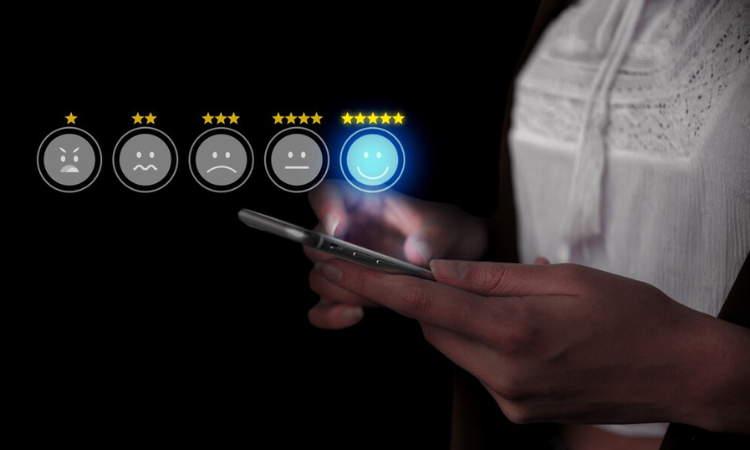Why does visiting a healthcare provider still feel like navigating a maze of delays, confusion, and frustration?
Think about it: when you’re unwell or caring for a loved one, the last thing you want is to deal with long wait times, unclear bills, or unanswered questions. Patients today aren’t just looking for medical expertise—they want an experience that’s smooth, transparent, and respectful of their time. Yet, too often, the reality falls short of these expectations.
This gap doesn’t just leave patients feeling let down—it creates ripple effects for providers too. Poor experiences drive patients to seek care elsewhere, add to staff stress, and lead to costly inefficiencies.
But here’s the good news: the tools to fix this are already within reach.
Healthcare providers today have access to more patient data than ever before, yet many struggle to use it effectively. While collecting feedback is a good first step, it’s not enough to drive real change. To truly transform the patient experience, you need a smarter, more strategic approach.
This is where healthcare customer experience management comes in. By streamlining operations, improving communication, and proactively addressing pain points, it enables you to create a seamless, patient-first journey that not only meets expectations but keeps patients loyal and engaged.
In this blog, we’ll explore how data-driven strategies can help you eliminate inefficiencies, boost patient loyalty, and deliver the kind of care experience your patients deserve. Let’s dive in.
TL;DR
-
Healthcare CXM enhances patient satisfaction, streamlines operations, and strengthens the patient-provider relationship by leveraging real-time feedback, automation, and AI-driven insights.
-
Hospitals and clinics struggle with fragmented patient journeys, long wait times, lack of actionable feedback, compliance concerns, and staff burnout, all of which lead to inefficiencies and lower retention.
-
A strong CXM strategy captures real-time patient sentiment, automates issue resolution, closes the feedback loop, and personalizes care experiences.
-
By integrating multi-channel feedback, optimizing scheduling, improving staff training, ensuring HIPAA compliance, and leveraging AI-powered analytics, providers can enhance patient engagement, improve access to medical records, and drive continuous improvement.
-
To improve the healthcare customer experience, you must
-
Automate patient feedback workflows
-
Personalize communication
-
Integrate feedback insights into EHRs
-
Act on real-time patient sentiment
-
-
Zonka Feedback helps healthcare providers collect and analyze patient feedback, automate workflows, ensure compliance, and optimize CXM with AI-driven insights. Book a demo or start your free 14-day trial today. 🚀
Revolutionize Healthcare CXM with AI and Automation
Collect real-time, in-moment feedback at all touchpoints in the patient journey and leverage insights to transform their experience.

What is Healthcare Customer Experience Management (CXM)?
Healthcare experience management is about making every patient interaction smooth, efficient, and patient-centered. From scheduling an appointment to post-care follow-ups, it ensures that patients feel heard, valued, and supported at every step.
But most healthcare systems aren’t built for seamless experiences. Disconnected departments, long wait times, and poor communication lead to frustration, delays, and lost trust. Patients expect better, but outdated processes hold providers back.
A strong CXM strategy fixes this by connecting all patient journey touchpoints—scheduling an appointment, billing, consultations, and feedback—into one unified experience. It’s not just about satisfaction; it improves efficiency, reduces churn, and ensures compliance.
With real-time feedback, automation, and AI-driven customer insights, healthcare providers can eliminate bottlenecks, streamline workflows, and create a system that works for both patients and staff.
Why Healthcare CXM Matters?
Patients today expect seamless, efficient, and personalized care, but the reality often falls short. A Harris Poll survey revealed that 62% of patients feel the healthcare system is overly complicated, and 66% are frustrated with managing their own care. From confusing billing to disconnected communication, these frustrations lead to lower satisfaction, decreased trust, and higher patient churn.
Recognizing this, 57% of healthcare providers now prioritize CXM over cost-cutting and revenue growth. Why? Because a strong CXM strategy improves patient retention, streamlines operations, and enhances staff efficiency—all while reducing costs in the long run.
With real-time feedback, automation, and AI-driven insights, healthcare organizations can eliminate inefficiencies, personalize patient interactions, and create a smooth, frustration-free experience. Investing in CXM isn’t just about better service—it’s about building long-term loyalty and operational success.
Common Challenges in Experience Management in Healthcare with Solutions
Improving healthcare experience management isn’t just about collecting patient feedback—it’s about turning that feedback into action. However many healthcare organizations struggle with fragmented systems, inefficiencies, and compliance concerns that prevent them from delivering seamless care.
Here are the biggest challenges in healthcare CXM and its solutions:
1. Fragmented Patient Journeys Due to Disconnected Systems
Healthcare operates in silos. Scheduling, billing, pharmacy, and consultations run on separate platforms that don’t communicate. Patients are left repeating their information, dealing with delays, and navigating a system that feels disjointed. Many also struggle with limited access to their medical records, making it harder to track their health, request prescriptions, or make informed decisions about their care. These inefficiencies not only frustrate patients but also increase administrative workload and operational costs.
💡 Implement real-time, multi-channel feedback loops that capture patient feedback at every touchpoint. Integrate feedback with EHRs, CRMs, and patient portals to eliminate silos and create a seamless experience across departments.
2. Long Wait Times & Scheduling Inefficiencies
Appointment scheduling remains one of the biggest pain points in healthcare. Patients wait weeks to see a specialist and spend hours in waiting rooms due to poor scheduling and overbooking. Long wait times directly impact patient satisfaction and are a leading cause of provider churn.
💡 Leverage AI-driven scheduling tools to predict patient flow and optimize appointment slots. Use real-time patient feedback to identify delays and adjust scheduling dynamically to reduce wait times.
3. Lack of Actionable Patient Feedback & Slow Response Times
Most healthcare providers collect patient feedback, but very few act on it fast enough to make a difference. Without automation, negative feedback often goes unnoticed until it’s too late. This leads to unresolved patient issues, declining satisfaction scores, and missed opportunities to improve service.
💡 Automate feedback collection and set up real-time alerts for negative patient responses. Ensure frontline staff receives instant notifications, enabling them to address concerns proactively and prevent escalations.
4. Compliance & Data Security Concerns
Many healthcare providers hesitate to implement digital tools due to concerns over HIPAA, GDPR, and other regulatory requirements. The fear of a data breach or compliance violation often slows down innovation, even though outdated systems pose an even greater risk.
💡 Adopt HIPAA-compliant feedback tools with end-to-end encryption and role-based access controls. Ensure that patient feedback is securely stored and integrated into existing systems without compromising compliance.
5. Staff Burnout & How Training Helps Fix It
Healthcare professionals are overwhelmed with administrative tasks, repetitive paperwork, and inefficient workflows. Burnout is at an all-time high, leading to reduced productivity, higher turnover, and lower quality of care. When staff is overburdened, patient experience suffers.
💡 Automate routine administrative processes such as survey collection, patient check-ins, and feedback analysis. Use patient sentiment data to identify common patient complaints and adjust staff training accordingly to enhance service quality and efficiency.
6. Securing Executive Buy-In & Budget Constraints
Leadership often views CXM as an operational expense rather than a revenue driver. Without clear data on how patient experience impacts retention and reimbursement rates, securing budget approval for CXM initiatives becomes a challenge.
💡 Present data-backed ROI projections that demonstrate how customer experience management in healthcare improves patient retention, increases revenue, and reduces operational inefficiencies. Show how automation reduces costs by streamlining processes and minimizing staff workload.
7. Ensuring Seamless CXM Integration with Existing Systems
Many hospitals rely on outdated EHRs, CRMs, and scheduling systems that don’t communicate with one another. Disconnected systems create inefficiencies, requiring staff to manually transfer information and increasing the risk of errors.
💡 Select feedback solutions that integrate seamlessly with existing hospital systems. A centralized CXM platform ensures patient feedback, scheduling, and EHR data work together, creating a more efficient and connected healthcare experience.
Healthcare CXM fixes inefficiencies, reduces patient frustration, and improves overall care quality. By leveraging real-time feedback, automation, and AI-driven insights, hospitals and clinics can eliminate bottlenecks, improve retention, and build a truly patient-first experience.
But What's the Role of Feedback in Healthcare CXM?
One of my colleagues Jenny recently arrived at the clinic on time, yet 45 minutes later, she’s still waiting—no updates, no communication, just frustration. She finally sees the doctor but leaves feeling unheard. No one asks about her experience, and she quietly decides to take her healthcare elsewhere.
This scenario happens every day. Patients rarely voice their frustrations directly to staff, but they do express them in online reviews, by switching providers, or worse—by avoiding care altogether. Traditional feedback methods, like annual surveys or post-discharge calls, often come too late to make a difference.
Now, imagine Jenny receiving a quick SMS survey right after check-in. She reports the delay, triggering an instant alert to staff. A simple update—"We’re running 15 minutes behind, thanks for your patience."—could have reassured her. Over time, her feedback helps the clinic optimize scheduling, reduce wait times, and improve operational efficiency.
But patient experience is about more than just fixing problems—it’s about personalizing care.
Importance of Personalization in Healthcare
A one-size-fits-all approach doesn’t work in healthcare. Patients have different expectations—some prefer in-person visits, others prefer telehealth. Some want detailed explanations, while others prefer quick and efficient care. The key to delivering personalized patient experiences is understanding what each patient values most—and real-time feedback makes that possible.
Here’s how real-time feedback transforms patient care:
-
Tailor healthcare services to meet the unique needs of individual patients, by identifying which patients prefer virtual vs. in-person visits.
-
Improve accessibility by offering telehealth and self-service scheduling for those who need flexibility.
-
Empower patients to take an active role in their healthcare decisions, by incorporating their preferences into treatment plans.
And there comes the Role of Technology in Personalizing the Patient Experience
Collecting customer feedback is just the first step. Technology is what transforms insights into action. Patients today expect digital-first healthcare experiences that fit their lifestyles, and real-time data helps providers adapt.
-
Electronic Health Records (EHRs) & patient portals allow patients to access test results, schedule post-treatment follow-ups, and communicate with their providers seamlessly.
-
Telehealth services & virtual care provide convenience for patients like Jenny, reducing wait times and increasing access to specialists.
-
Mobile health apps & patient engagement platforms offer personalized health reminders, self-service appointment booking, and symptom tracking.
The next step is implementing a CXM strategy that delivers measurable results.
How Healthcare Providers Can Build a Winning Experience Management Strategy?
A strong healthcare experience management strategy isn’t just about collecting feedback—it’s about using that feedback to drive real improvements. By integrating automation, AI, and real-time insights, healthcare providers can streamline operations, enhance patient satisfaction, and improve retention.
Here’s how you can improve healthcare customer experience management:
Step 1: Implement a Multi-Channel Patient Feedback System
To truly understand patient sentiment, you need to capture feedback at every touchpoint. By leveraging multiple channels, you can gather data-driven insights in real-time and integrate them seamlessly with your EHR system for actionable improvements.
Here’s how you can implement a multi-channel feedback system effectively:
-
Deploy feedback kiosks at key locations like waiting areas, check-out counters, and pharmacies.
-
Send post-visit SMS or email surveys to capture patient experiences after appointments or procedures.
-
Integrate in-app feedback for telehealth platforms to gather insights from virtual consultations.
-
Ensure real-time integration with your EHR system to enable quick, data-driven decisions.
By adopting a multi-channel approach, you gain a 360-degree view of patient experiences, empowering you to address issues before they escalate.
Step 2: Automate Patient Experience Workflows
Automation is key to staying ahead of patient concerns. By setting up smart workflows, you can ensure no feedback goes unnoticed and every issue is resolved promptly.
Here’s how to automate patient experience workflows for maximum impact:
-
Set up auto-alerts for negative feedback (e.g., low ratings or complaints) to notify relevant staff instantly.
-
Use AI-powered analytics to identify recurring themes like long patient wait times or communication gaps.
-
Create task assignments for specific team members based on feedback type, ensuring accountability and swift resolution.
Automation not only saves time but also helps you proactively address systemic issues, improving overall patient satisfaction.
Step 3: Close the Feedback Loop to Improve Patient Retention
Patients want to feel heard. By closing the feedback loop quickly, you can turn dissatisfied patients into loyal advocates and build long-term trust.
Here’s how to close the feedback loop effectively:
-
Respond to feedback within 24-48 hours, acknowledging concerns and outlining steps for resolution.
-
Assign a dedicated team member to follow up personally with dissatisfied patients, offering solutions or compensation where appropriate.
-
Share positive feedback with staff to boost morale and reinforce patient-centric behaviors.
Closing the loop shows patients their voices matter, fostering loyalty and reducing patient churn.
Step 4: Reduce Wait Times with Real-Time Monitoring
Long wait times are a major pain point for patients. By leveraging real-time data, you can optimize operations and create a seamless patient journey.
Here’s how to reduce wait times with real-time monitoring:
-
Track patient flow data to identify bottlenecks in scheduling, check-ins, or discharge processes.
-
Implement self-check-in kiosks and automated appointment reminders to reduce manual workloads and delays.
-
Adjust staffing levels dynamically based on real-time demand to optimize resource allocation.
Streamlining operations not only improves patient satisfaction but also enhances staff efficiency, creating a win-win for your organization.
Step 5: Ensure CXM Compliance & Security
Protecting patient data is non-negotiable. By using secure, compliant tools, you can build trust while safeguarding your organization from risks.
Here’s how to ensure CXM compliance and security:
-
Choose a HIPAA-compliant platform like Zonka Feedback to securely collect and store patient data.
-
Implement role-based access controls to ensure only authorized personnel can view sensitive feedback.
-
Regularly audit feedback processes to ensure compliance with evolving healthcare regulations.
A secure feedback system not only protects patient data but also strengthens your reputation as a trustworthy healthcare provider.
By following these steps, healthcare organizations can transform patient experiences, drive operational excellence, and build a reputation for delivering exceptional care. With Zonka Feedback, you’re not just collecting feedback—you’re creating a patient-centric culture that sets you apart.
The Building Blocks of Exceptional Healthcare Experience Management
Creating a seamless patient experience requires more than just good medical care—it demands a strategic approach that prioritizes efficiency, personalization, and communication. Here are the key elements that define a successful healthcare experience management strategy.
-
Patient-centric approach: Prioritizing the needs and preferences of patients in the design and delivery of healthcare services.
-
Personalization: Tailoring healthcare services to meet the unique needs and preferences of individual patients.
-
Effective communication: Ensuring clear and timely communication with patients throughout the healthcare journey.
-
Staff training and development: Equipping healthcare professionals with the skills and knowledge needed to deliver exceptional patient experiences.
A strong CXM strategy isn’t just about improving patient satisfaction—it enhances trust, retention, and operational efficiency. By focusing on these key elements, healthcare providers can build long-term relationships and create a truly patient-first experience.
Conclusion
Healthcare is no longer just about treating illnesses—it’s about delivering an experience that patients value and trust. Long wait times, unclear processes, and a lack of follow-up care can leave patients feeling frustrated and disconnected. But when providers prioritize customer experience in healthcare, they can transform these pain points into opportunities for loyalty and growth.
By embracing a patient-first approach, healthcare organizations can streamline operations, improve communication, and deliver care that feels personal and seamless. Tools like Zonka Feedback make this possible by turning patient feedback into actionable insights, helping providers address concerns in real time and build stronger relationships.
The future of healthcare belongs to those who put patients at the center of everything they do. Ready to take the first step? Explore how Zonka Feedback can help you create a healthcare experience that patients truly appreciate. Start your free 14-day trial or schedule a demo today—because better care starts with listening.
FAQs about Healthcare Customer Experience Management
Here are the common questions healthcare providers ask about improving patient experience and streamlining operations with CXM.
1. What is healthcare experience management?
Healthcare experience management (CXM) is the process of improving every patient interaction—from scheduling to post-care follow-ups. It uses real-time feedback, automation, and personalized care to enhance patient satisfaction and better health outcomes.
2. What does CX mean in healthcare?
CX (customer experience) in healthcare refers to how a patient perceives their entire customer journey with a provider. It includes appointment scheduling, communication, treatment, and follow-ups. A positive CX leads to better engagement, trust, and retention.
3. What are the 4 P’s of patient experience?
The 4 P’s of patient experience are:
-
Personalization: Tailoring care to individual patient needs.
-
Predictability: Ensuring smooth, well-organized healthcare experiences.
-
Participation: Encouraging patients to be active in their care.
-
Proactive Care: Anticipating patient needs to improve health outcomes.
4. What is the concept of customer experience management?
Customer experience management (CXM) involves collecting, analyzing, and acting on patient feedback to create seamless, efficient, and patient-first healthcare services. It helps identify pain points, streamline workflows, and strengthen patient-provider relationships.
5. How does CXM impact patient retention?
A strong CXM strategy ensures:
-
Clear and timely patient communication.
-
Reduced patient wait times and improved efficiency.
-
Personalized care that makes patients feel valued.
When patients have a positive patient experience, they are more likely to stay with their provider.
6. What are the best tools for patient feedback in hospitals?
The best tools offer:
-
Multi-channel feedback collection (SMS, email, kiosks, WhatsApp, online patient portals).
-
Real-time alerts for immediate issue resolution.
-
AI-driven insights to improve the patient experience.
-
HIPAA-compliant data handling for security and compliance.
Zonka Feedback provides an automated, secure, and actionable feedback system to help hospitals improve patient care and satisfaction.










